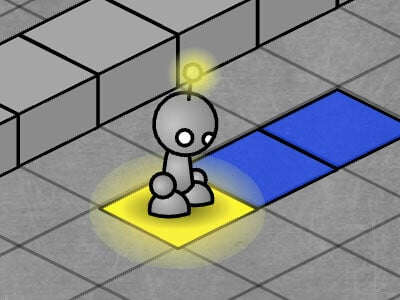Lightbot: Learn to Code with Fun Puzzles

Lightbot: Learn to Code with Fun Puzzles
Solve programming puzzles by giving a robot commands to light up tiles. A fun and engaging way to learn the logic of coding and sequencing.
Categories
Tags
HTML5
WebGL
Landscape
800x600
September 15, 2008
January 1, 2026
610.0K
66%
Thumbnails & Icons

Description
Solve programming puzzles by giving a robot commands to light up tiles. A fun and engaging way to learn the logic of coding and sequencing.
Instructions
What is Lightbot?
Lightbot is a puzzle game designed to introduce players to the fundamental concepts of programming logic in a fun and accessible way. The game's mechanics require you to solve levels by issuing a sequence of commands to a robot. The objective on each level is to guide this robot to specific blue tiles and issue a 'light' command to illuminate them all. As you advance, the puzzles become more complex, requiring you to think like a programmer by using concepts such as procedures and loops to create efficient solutions. It's a game that cleverly disguises learning computer science logic as a simple and engaging challenge, making it ideal for aspiring coders of all ages.
How to Play Lightbot
Playing Lightbot involves dragging and dropping command icons into a program area. The main commands include moving forward, turning left or right, jumping up or down a block, and lighting up the current tile. You arrange these commands in the 'main method' area to create a sequence for the robot to follow. As you progress to more difficult levels, you will unlock 'procedure' slots. This allows you to group a sequence of commands into a reusable function. Instead of writing the same long sequence multiple times, you can simply call the procedure, teaching the core programming principle of abstraction and breaking down complex problems into smaller, manageable parts.
Tips to Win Lightbot
To succeed in Lightbot, look for patterns. Many puzzles involve repetitive actions. If you notice your robot needs to perform the exact same series of steps more than once, that's a perfect opportunity to use a procedure. For example, if lighting up one tile involves a 'walk forward, jump, turn right' sequence, put that sequence into PROC1. Then you can simply call P1 whenever you need to perform that action. This not only saves space in your main program but is also the key to solving the most complex levels. Think about the problem logically and break it down into the smallest possible repeating steps to build your solution efficiently.